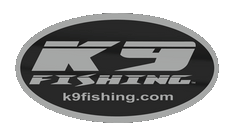Technique-Specific Fishing Line Choices: Match Your Line to the Lure
Aug 12, 2025
Why matching line to technique matters
The right line doesn’t just hold fish—it changes how your lure moves, feels, and hooks up. Stretch, sink rate, visibility, and abrasion resistance all affect presentation. Below is a simple framework to match fluorocarbon, copolymer, and braid to the techniques you fish most.
The big three at a glance
- Fluorocarbon: Low stretch, sinks, high abrasion resistance, low visibility. Great for bottom contact and clear water.
- Copolymer (mono-blend): Moderate stretch, floats/neutral, casts easily, versatile, budget-friendly. Great for moving baits and treble-hooks.
- Braid: Near-zero stretch, floats, ultra-sensitive, thin diameter, strongest in cover. Use with a leader when visibility matters.
Quick-pick cheat sheet
| Technique | Best Line Type | Typical Pound-Test | Why it works |
|---|---|---|---|
| Topwater walking/poppers | Copolymer | 12–17 lb | Keeps bait on top; a bit of stretch avoids ripping trebles |
| Hollow-body frog | Braid | 50–65 lb | Cuts vegetation; zero stretch for stout hooks |
| Jerkbaits | Fluorocarbon | 8–12 lb | Sinks slightly; crisp twitches; stealth in clear water |
| Squarebills/cover cranking | Copolymer | 12–17 lb | Forgiving stretch; abrasion friendly |
| Mid/Deep crankbaits | Fluorocarbon | 10–12 lb | Helps diving depth; good feel on rock |
| Spinnerbaits/Chatterbaits | Fluoro or Copoly | 14–20 lb | Balance of sensitivity (fluoro) vs. forgiveness (copo) |
| Texas-rig worms | Fluorocarbon | 12–20 lb | Sensitivity for bites; abrasion resistance |
| Jigs (rock/wood) | Fluorocarbon | 15–20 lb | Bottom contact feel; stealth |
| Jigs (grass/punching) | Braid | 40–65 lb | Power to winch fish from mats |
| Carolina rig | Fluorocarbon | 15–20 lb | Casting distance + stealth leader |
| Ned/Neko | Braid main + Fluoro leader | 10–15 + 6–10 lb | Sensitivity with finesse stealth |
| Drop shot | Fluoro (or braid+leader) | 6–8 lb | Natural fall; subtle bites telegraph |
| Small swimbaits (open) | Fluorocarbon | 10–15 lb | Natural sink; precise feel |
| Big glide/soft swimbaits | Fluorocarbon | 20–25 lb | Shock resistance on big hooks |
| Panfish/Crappie | Copolymer | 4–8 lb | Easy casting, forgiving |
| Trout (lakes/streams) | Copoly + Fluoro leader | 2–6 lb | Manageability + stealth |
| Catfish (rivers) | Braid + Copoly leader | 30–65 + 20–40 lb | Strength + abrasion buffer |
| Inshore redfish/snook | Braid + Fluoro leader | 15–30 + 20–40 lb | Distance, sensitivity, invisibility |
Technique break-downs (and simple upgrades)
Topwater
Use copolymer 12–17 lb to keep baits lively and floating. Avoid fluoro (it sinks and can drag the nose down). For frogs in mats, go 50–65 lb braid to drive hooks and cut grass.
Crankbaits
- Deep divers: 10–12 lb fluorocarbon increases running depth and keeps contact with rock.
- Squarebills around cover: 12–17 lb copolymer adds a little stretch so trebles stay pinned on surging fish.
Jerkbaits
8–12 lb fluorocarbon sinks slowly and tightens your cadence, making suspending baits dart and pause naturally—especially in clear water.
Spinnerbaits & Bladed jigs
If you want thump-to-hand sensitivity, choose 15–17 lb fluorocarbon. Prefer a little cushion on close-range eats? 15–17 lb copolymer is forgiving with single hooks.
Texas rigs & Jigs
For wood/rock, 15–20 lb fluorocarbon gives abrasion resistance and crisp bite detection. In grass, switch to 40–65 lb braid to slice stems and haul fish out fast.
Finesse (Ned, Neko, Wacky) & Drop shot
Run 10–15 lb braid mainline to a 6–10 lb fluorocarbon leader (6–8 for drop shot). You’ll get long casts, instant hooksets, and the stealth of a clear leader.
Swimbaits
- 2–5” paddletails: 10–15 lb fluoro for natural sink and steady feel.
- Big glides/softs: 20–25 lb fluoro to handle surges and protect expensive baits.
Species-specific (fast hits)
- Crappie/Panfish: 4–8 lb copolymer for easy casting of tiny jigs.
- Trout: Copolymer main with a short fluoro leader in ultra-clear water.
- Catfish: 30–65 lb braid with a 20–40 lb copoly leader for abrasion.
- Inshore redfish/snook: 15–30 lb braid + 20–40 lb fluoro leader for distance and invisibility.
How to dial it in for your water
- Clarity: The clearer it is, the more fluorocarbon (or longer fluoro leader) pays off.
- Cover: The heavier the cover, the more you’ll lean on braid.
- Treble-hook baits: Favor copolymer or lighter fluoro for landing percentage.
- Cold water: Lines feel stiffer; size down one test where safe.
- Wind & casting distance: Braid mainline with a fluoro leader adds distance and sensitivity.
Rigging tips that save fish (and money)
- Leaders: 18–72 inches of fluorocarbon on braid gives stealth without constant re-ties.
- Knots: Palomar for braid/fluoro, improved clinch or San Diego Jam for fluoro/copoly.
- Spooling: Fill to ~1⁄16" below the lip to reduce wind knots and improve casting.
- Retie often: Check for nicks every few fish; cut back a foot when needed.
Gear up with K9
Not sure where to start? Try our Find Your Line quiz and compare specs on our Line Comparison Table. Then shop:
- K9 Fluorocarbon – stealth and sensitivity for bottom contact
- K9 Copolymer – forgiving, versatile workhorse for moving baits
- K9 Braid – power and precision in grass, pads, and heavy cover
(Note: Our JDM Silk Braid is coming soon; current braid options are in stock.)
FAQ
What pound test is best for bass jigs?
15–20 lb fluorocarbon around rock/wood; 40–65 lb braid in grass.
Should I use a leader with braid?
Yes when water is clear or fish are pressured—use 2–6 ft of fluorocarbon.
Why avoid fluorocarbon for topwater?
It sinks and can pull the nose of your bait down, hurting action.



